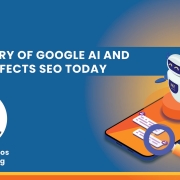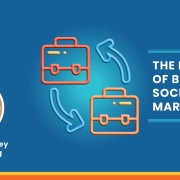SEO, AI, 16,000 People, EEAT, YMYL and How It All Works
The new AI tools such as ChatGPT, Microsoft Chat, Google Bard, Anthropic Claude, and others appeared in early 2023. These brought attention to the hidden AI at Google. What are they and what do they do? How did Google start to use AI? Let’s go to the beginning.
Google: From Handwritten Algorithms to AI
Google started in 1998 as an algorithm. These were some 200 handwritten rules to filter pages. Spammers quickly figured out how to bypass that. In 2013, Google added Hummingbird, a machine learning (ML) artificial intelligence (AI) that could recognize words. In 2015, Google added Rankbrain (an ML), which matched search results to the users’ intentions. This AI was particularly good with queries that Google has never seen before, which happens 500 million times daily.
Over the years, Google has added more AIs. The Google Maps AI calculates the best route, depending on the weather and traffic along your path. The Google Images AI looks through 136 billion images, and since Google knows your preferences, you see the images you likely want. The Google Ads AI uses different principles. This means Google isn’t just one Google. Different processes and AI come into action, depending on the query. What works well for one query may not have any effect on another query.
Keywords were indeed the center of Google and other search engines in the late 90s and into the 2000s, but search engines realized these had limits. Keywords generally don’t show the user’s intent.
This is easy to illustrate. You pay your $320,000 tuition to Stanford Business School where you’ll learn nobody goes to Home Depot to buy a hammer. What people really want is to hang up a photo of mom and her cat. The keyword is “hammer”, but the intent is what they want to do. How to uncover that is often difficult, as those of you know who ever worked as a waiter. “I’ll have the chocolate cake, no, wait, the apple pie looks good, no, maybe the…”
Search engines moved beyond keywords and began to look at the user’s intent. One way to do this was to look at the user’s data. From the first day you signed up for Gmail, Google has been tracking every page you’ve ever seen, including every ad you never clicked, how long you look at pages, the path as you go from page to page, and so on. It has a pretty good idea of your age, sex, location, education, income, and several thousand other parameters. Google has 20+ years of data on some two billion people. Google can make a pretty guess what you really want.
Google Is Actually an AI and 16,000 People…
As you also know, AIs often make wrong decisions. They need people to review the results. Just like when you turn on cruise control in your car (or switch on Autopilot), you still need to keep your hand on the steering wheel.
The history of this at Google is a bit amusing. At first, Google told their employees to rate the AI’s results, so in the afternoon, everyone at Google spent time marking results as good, maybe, or bad. The engineers got annoyed at doing this and they rebelled. Google outsourced this to a company that hired a few hundred contractors. This has grown over time to 16,000 contractors in nearly all countries in all languages, including Navaho. They’re called Google Quality Raters (GQR). They work from home, in their pajamas, and vote on pages with one to five stars.
For many years, Google flatly denied this. That wasn’t a trivial issue. Good ol’ 47 U.S.C. §230(c)(1) is a law that says if a website doesn’t edit results, it can’t be liable. It was critical for Google to keep this secret. In the last few years, Google opened up somewhat, but deep details are still secret.
The GQRs read the GQR Guidelines (a 167-page manual) and take tests before they can rate pages. Several concepts stand out in the GQR Guidelines:
- E.E.A.T. is Experience, Expertise, Authoritativeness, Trustworthiness. GQRs see how much experience the author has. GQRs check expertise by looking for credentials, certificates, degrees, licenses, and similar. For authority, GQRs look to see if other authoritative websites link to the site. And finally, trustworthiness is the smell test: the GQRs look at the overall picture and wonder if the site is trustworthy. Would they let their mom visit this site?
- YMYL is Your Money or Your Life. Remember the old cowboy movies where the bandits stop the stagecoach and say, “Your money or your life”? Webpages that have anything to do with a user’s money, credit cards, insurance, loans, health, or medical issues get special attention from the GQRs. In the 2016 election and COVID-19, certain political groups or foreign countries tried to stir up controversy in the US by posting fake information. So YMYL now also includes politics, social issues, and anything that may affect society. These get close reviews from people.
There are lots of details, but this is the essence. The Google AI sorts pages into categories and ranks them. The 16,000 GQRs score the AI’s results with one to five stars. In effect, they’re saying “good AI!” or “bad AI!”. The GQRs are training the AI.
This isn’t mysterious. You do the same with Google Maps when you drive to your mom’s home. When you get there (“You have arrived!”), Google asks for a rating. If you give it a frowny face ☹, a second screen shows up and Google asks why. You’re teaching the AI.
This isn’t just a Google thing. All the large web platforms (Microsoft Bing, Yahoo, Instagram, LinkedIn, Baidu, and so on) use machine learning AI and anywhere from five thousand to ten thousand reviewers.
The Bottom Line in SEO
Most of the basics of SEO (navigation, page speed, keywords in headings and meta-tags, fixing bad links, XML, HRefLang, Schema, and so on) are necessary, just as you put on shoes when you go to a meeting. Add these and fix the broken stuff.
This means you should be careful with promises of technical solutions. Dozens (or hundreds) of SEO tools promise #1 tip top ranking. For example, you can use software to get perfect grammar, but Google doesn’t care about that. It looks at the author’s experience and expertise. No tool or SEO staffer can do that.
The focus of your SEO work is to show your EEAT:
- Experience: Clearly show the author of the page has significant experience in the topic.
- Expertise: List the author’s credentials, certificates, degrees, licenses, or similar.
- Authority: You see a page’s authority when other authoritative sites or experts link to the page. You get this through link building. However, not just any link. Get links from leading experts in your field.
- Trustworthiness: As I said, this is the smell test. Does the page feel right? This includes transparency, such as who is responsible for your site, which includes name, address, telephone, email, city, and state.
If your site has to do with health, money, politics, or social issues, there is also YMYL. The GQR reviewers are told to be especially critical with these pages.
Wrapping Up
SEO was once something that could be easily done by people with a bit of training. But search engines realized users want reliable expert information.
In response, Google built a collection of AIs and 16,000 Quality Raters to find pages by experts with experience. When users are happy with search results, they come back to Google, and Google can then say to millions of companies, “See? We have 90.3% global market share. If you want to reach them, you must advertise on Google.” That’s how Google makes $225 billion yearly in advertising. That’s why Google puts so much effort in quality.
For further exploration:
- You can get the Google Quality Rater Guidelines (167 pages, 2022) at https://developers.google.com/search/blog/2022/12/google-raters-guidelines-e-e-a-t
- Andreas teaches courses at the DMAnc.org in digital marketing with AI, SEO, digital advertising, Google Analytics 4.0, and LinkedIn profile optimization.







